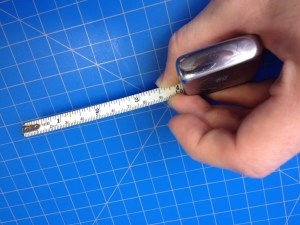For probably about a dollar from a second-hand store I picked up a bag of random toys that had a very strange tank inside. Now I’m quite the tank person, I have at least a dozen books and quite a few models of tanks, but even if you aren’t a tank person, the distinctive turret of a Tiger is instantly recognizable.

But this turret was strange, not just because it was molded in the (unrealistic) standard army-man green, but also because of the “chassis” is was mounted on. The turret is a crude but serviceable representation of a Panzer VI (Tiger), but everything attached below is a perfect representation of a “generic” tank. That is to say, it resembles no tank specifically (least of all a Tiger), but all tanks superficially. That isn’t necessarily to the detriment of the toy. Most kids don’t know or care that their plastic army-men are decked out in Vietnam War-era gear and smacking each other around with Patton or Centurion tanks. Some even have WWII-era gear with matching Shermans and Tigers (or even Panzer IVs), and more up-to-date ones have Abrams* tanks; I’m sure the kids don’t care.

What I find strange is that someone (probably in a Chinese factory) took the time to make a decent facsimile of the turret of a Tiger tank and didn’t follow through with the body. Why? Did they run out of time? Did they not care? Did their boss tell them to make a Tiger and they got away with just sculpting the turret because no one actually cared? Finding the set, which features a very unsettling modern German flag (I get they couldn’t wouldn’t use a swastika, but couldn’t they at least use the Imperial German flag?), probably answers the question (nobody in the whole process cared), but I still wonder what was going on in the exact moment this thing was created. I bet the idea that someone would ever look closely enough to determine that is wasn’t a Tiger was never even considered.

*Could be Challengers or Leopards, or any other modern tank that looks almost the same.

















